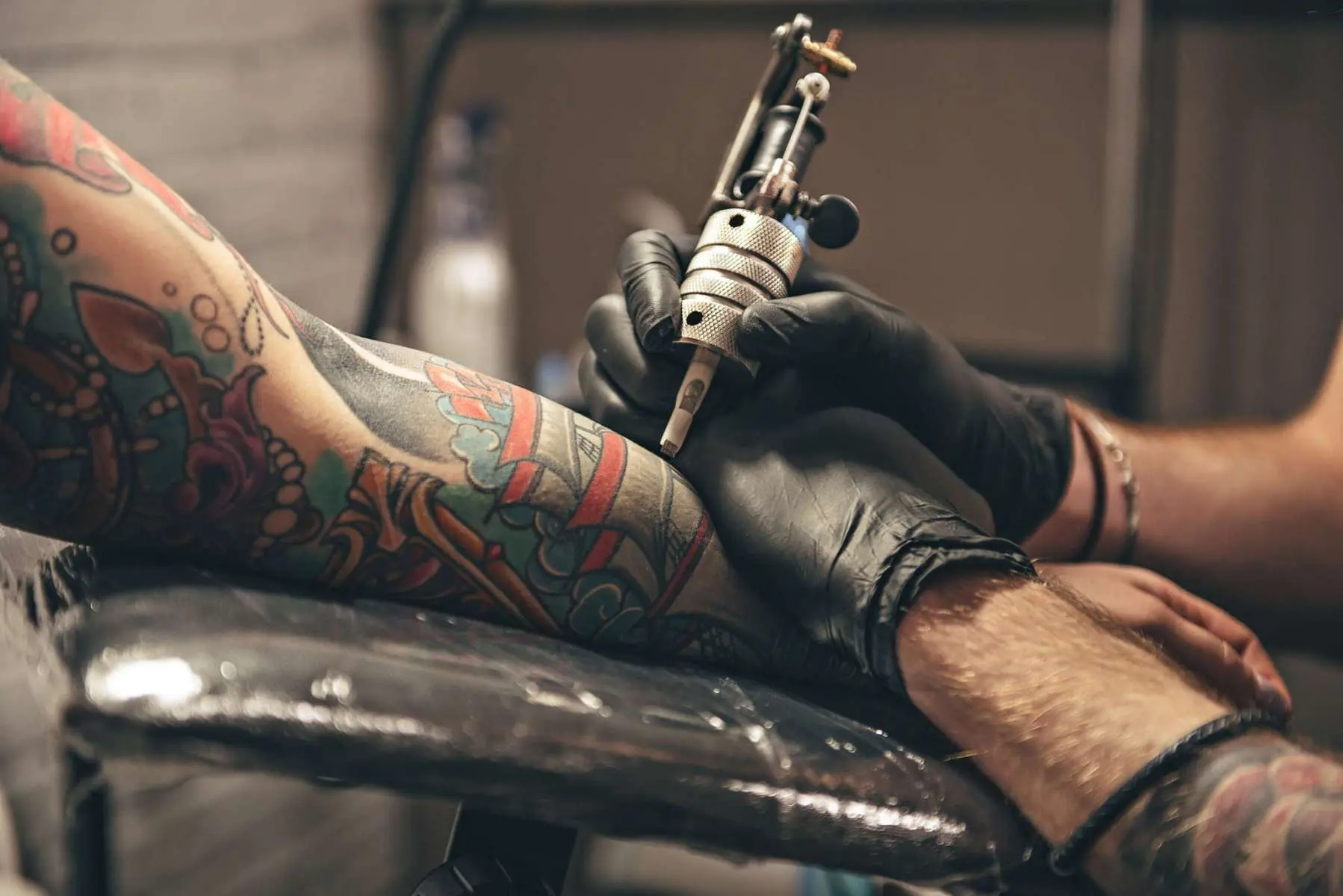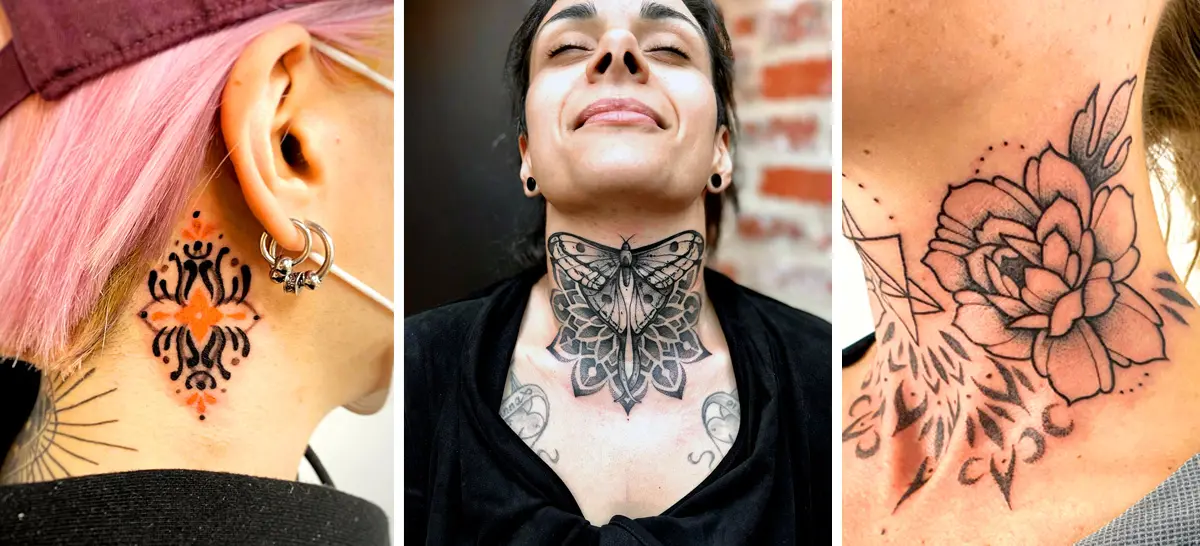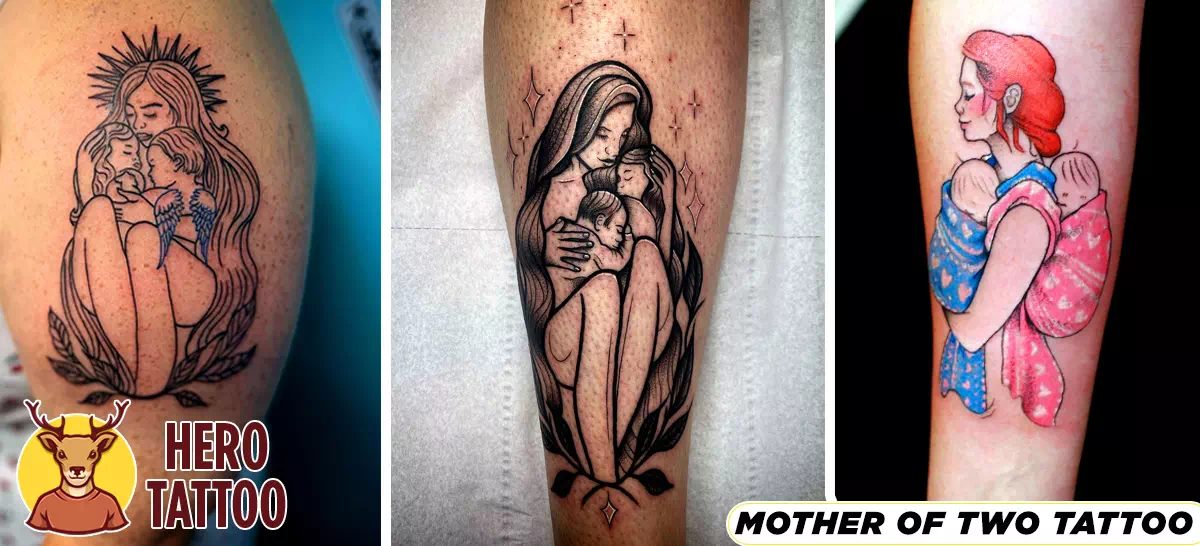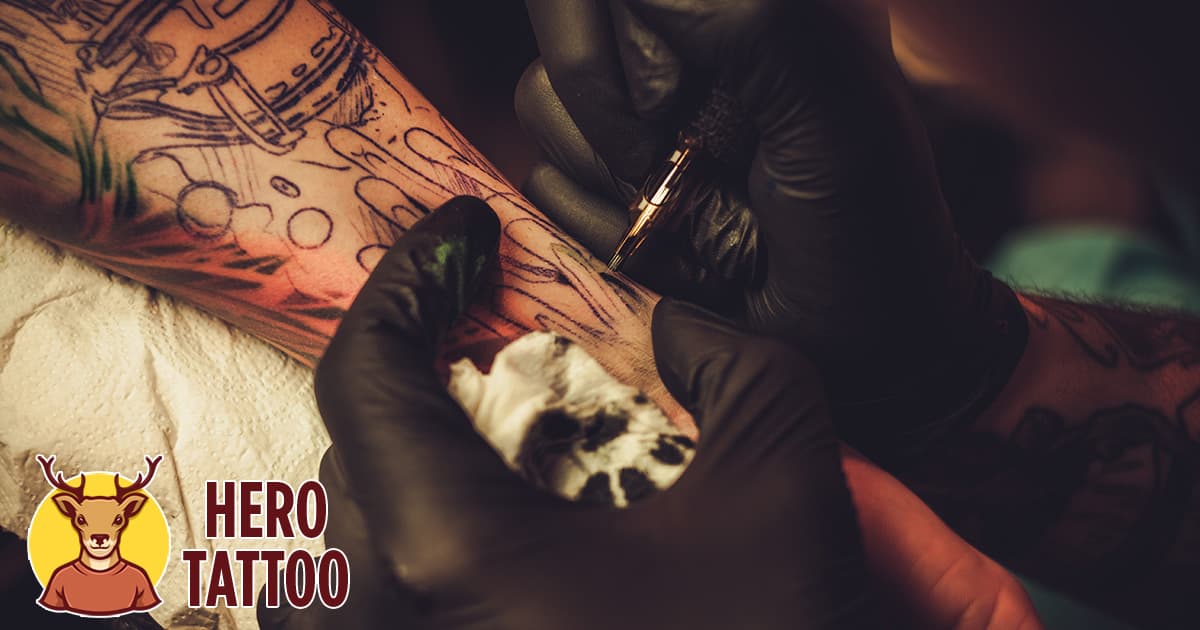Deciding to get a tattoo is both extremely serious and thrilling. Because you’ll be receiving this fantastic permanent piece of art on your body, it’s a fascinating prospect. On the other hand, it is dangerous since it entails a painful procedure in which the tattoo needle is repeatedly “stabbed” into the skin.
The fact that you’re reading this shows that you’re taking your tattoo experience seriously, which should be commended in the highest possible terms.
We feel it is critical to educate yourself well before beginning your adventure when it comes to tattooing. The following information is for those who wish to learn more about tattoo needles and their use in practice. So, without further ado, let’s get this show on the road.
The Tattoo Machine/Needle – Explained
The Tattoo Machine

A tattoo machine is a piece of equipment that tattoos people.
To fully comprehend the tattoo needle, we must first grasp the fundamentals of the tattoo machine: the tattoo machine itself, of course. The conventional tattoo machine is an electrical instrument used to tattoo people all over the world.
An armature bar, which goes up and down at a pace of 6,000 movements per minute, pulses a tattoo needle into the subject’s skin using a standard tattoo machine. This is accomplished through the use of a specialized mechanism of electromagnetic coils.
On the other hand, a tattoo machine is worthless if it does not have ink. It is necessary to transfer the ink into the skin while simultaneously pushing the needle in and out. Do you recall the armature bar? This bar is coupled with a barred needle cluster responsible for pressing the ink into the skin with each stroke.
How does the machine ensure that the ink remains on the skin at this point?
When it drives the needle into the skin, the needle pierces the skin and produces a hole, which will serve as a storage area for the ink. As the hand emerges from the skin, it generates a vacuum seal, which draws the ink into the hole in the skin that had been previously formed. Skin cells known as macrophages and fibroblasts are found within the gaps that have been created. As you can see, that’s where the ink is caught and sealed.
As a result, the ink is sealed into the skin, and it should remain that way throughout the tattoo recovery process. However, if the healing process is not proceeding as planned, the ink may begin to peel away from the skin at any point, resulting in concerns such as tattoo infection. That, however, is a matter for another essay entirely.
The Tattoo Needle
A tattoo needle is a needle used for tattooing.
Tattoo needles are often constructed of steel, nickel, and chromium. They are also available in other materials. Tattoo needles of various sizes and shapes are used for multiple tattooing techniques, shading, colouring, dotting, and other tattooing activities.
Round needles, for example, are used for shading and lining, while flat needles are used for cleaner, darker lines, and magnum needles are used for shading and shade.
The thickness of standard needles is between 0.30 mm and 0.35 mm in diameter. Some tattoo needles are considerably thinner than that, according to the manufacturer. As an example, bug pins, also known as magnum needles, are typically between 0.20mm and 0.25mm in thickness. They are mainly used for delicate shading and detailing.
Tattoo needles are pre-sterilized before each use and disposed of after each use.
What Is the Function of the Tattoo Needle? Several factors determine the appropriate tattoo needle depth.
The Layers of the Skin
Assuming we have a basic understanding of what a tattoo machine and needle are, it is time to consider the other critical aspect of tattooing: the skin.
Your skin, as well as everyone else’s, is made up of three layers:
- The epidermis (which is further subdivided into five sublayers) is the skin’s surface and the outermost layer, and it is made up of five layers. It is in charge of keeping the body watertight and maintaining the skin’s natural tone.
- In addition to connective tissue, sweat glands, and hair follicles, the dermis is a layer that lies immediately under the epidermis and contains all of the body’s connective tissue.
- The hypodermis or subcutaneous tissue, serves as a storage layer for fat and connective tissue.
Within these three primary layers are hair follicles, sweat glands, fat tissue, connective tissue, and blood arteries, which combine to form the biggest organ in the body and the largest organ on the planet. Did you know that the surface area of your skin is around 20 square feet in size? You now possess this knowledge.
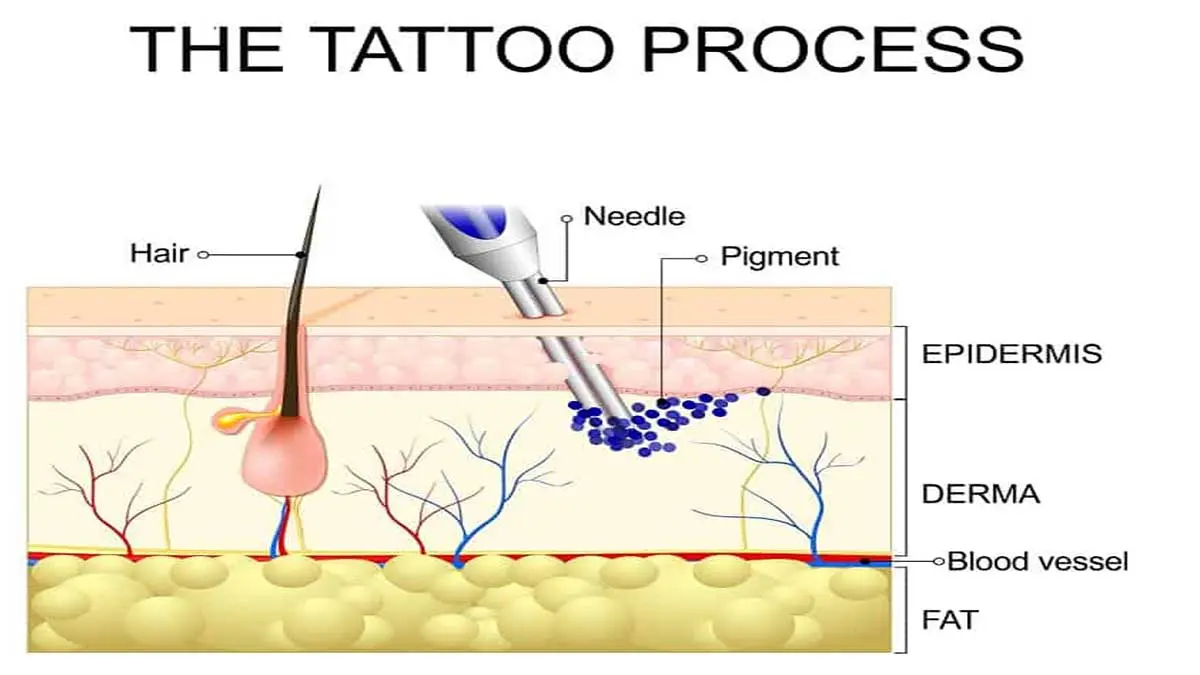
So, where precisely should the needle be inserted?
The tattoo needle should be inserted into the dermis layer of the skin before beginning the tattooing process. This layer is located in the centre of the tattoo and is ideal for ensuring that the ink remains in the skin and does not “bleed out” while the tattoo heals.
The epidermis is not an ideal site for tattooing since it is too exposed and too outward, but the hypodermis is too deep into the skin. As a result, the ink will not be as apparent, and the pain experienced throughout the tattooing process will be twice as acute. Another issue to consider is that if the needle reaches the hypodermis, the client will probably become infected.
So, how deep should a needle be inserted into the skin, to be precise?
According to the measurements, the answer is around 1/16th inch deep into the skin. Essentially, this implies that the ink will be precisely 2 millimetres deep into the dermis layer.
If you’re curious about how a tattoo artist determines the location of the dermis layer in the skin, we’ve got you covered there, too.
Before the tattooing procedure can begin, the tattoo artist must adjust the tattoo machine and the needle to achieve the desired dermis layer placement parameters. As a result, the dermis layer of the skin is roughly 1/16th of an inch deep in the body.
Because of this information, the tip of the tattoo needle is adjusted to only enter the skin at a specific depth, rather than a millimetre deeper or more profound than that. This implies that the tattoo needle should not protrude more than 2 mm from the tattoo machine and should not protrude less than 1 mm from the tattoo machine.
What Happens If The Needle Is Placed Too Deeply Or Too Deeply?
Even if the needle penetrates the epidermis, or the outermost layer of skin, the ink will transfer to the skin but will not remain in it.
It is also possible that once the needle exits the skin and the bleeding begins, the ink will be forced out of the skin. Most of the ink will likely have been removed from the skin by this time, and the result will be a partially messed up tattoo and a faded appearance (in the best case).
On the other hand, if the needle penetrates too far into the skin, into the hypodermis layer, it may result in more severe complications. It will be more difficult for the ink to disappear completely from the skin, but it will also be substantially less noticeable. Furthermore, such tattoos will hurt significantly more than ordinary tattoos that professionals have correctly done.
Because the ink has penetrated so deeply into the flesh. As a result, certain individuals might have significant tattoo infections and skin irritations. Because the ink travels quickly in the fat layer, there is also a possibility of a tattoo blowout occurring during the procedure. As a result, even if you have a perfectly healthy tattoo, it will appear deformed and screwed up.
Is it possible for the needle to transfer ink into the blood vessels?
When it comes to tattoo needles, one of the most frequently asked questions is whether the hand can enter the veins and inject ink into the blood vessels.
Because of the presence of blood vessels or veins in the dermis layer of the skin, as previously stated, there is a potential that the tattoo needle will penetrate a vein during the procedure. An experienced tattoo artist, on the other hand, understands how to manoeuvre the hand and guarantee that only minimal quantities of ink are deposited into the skin throughout the tattooing process. Using this method, no matter how much ink gets into the blood vessels, it will not cause any problems.
To tell the truth, once you get a tattoo, the ink will be present in your body and bloodstream regardless of the location of the blood vessels. On the other hand, the body can break down the ink with the help of its robust immune system.
Because professional tattoo artists understand how deep their needles should be inserted into the skin, ink in the bloodstream does not threaten the patient. If they fail to consider this critical point, the amount of ink that enters the bloodstream will almost certainly cause toxicity difficulties.
As a result, it is always crucial to get your tattoo done by skilled specialists at recognized tattoo shops and salons rather than anybody else.
Finally, note that
Hopefully, this little essay has made it simpler for you to grasp how tattoo machines and needles function, as well as providing an answer to the issue of how deep your hands should penetrate the skin when tattooing. Check out our website and other fascinating and instructional articles for more information on this and other related subjects.
And remember, if you have any worries or questions before getting a tattoo, try to find out as much information as you can online or speak with your tattoo artist personally. Their knowledge of what to do and how to explain it will ensure you have the most enjoyable and successful tattoo experience possible.
